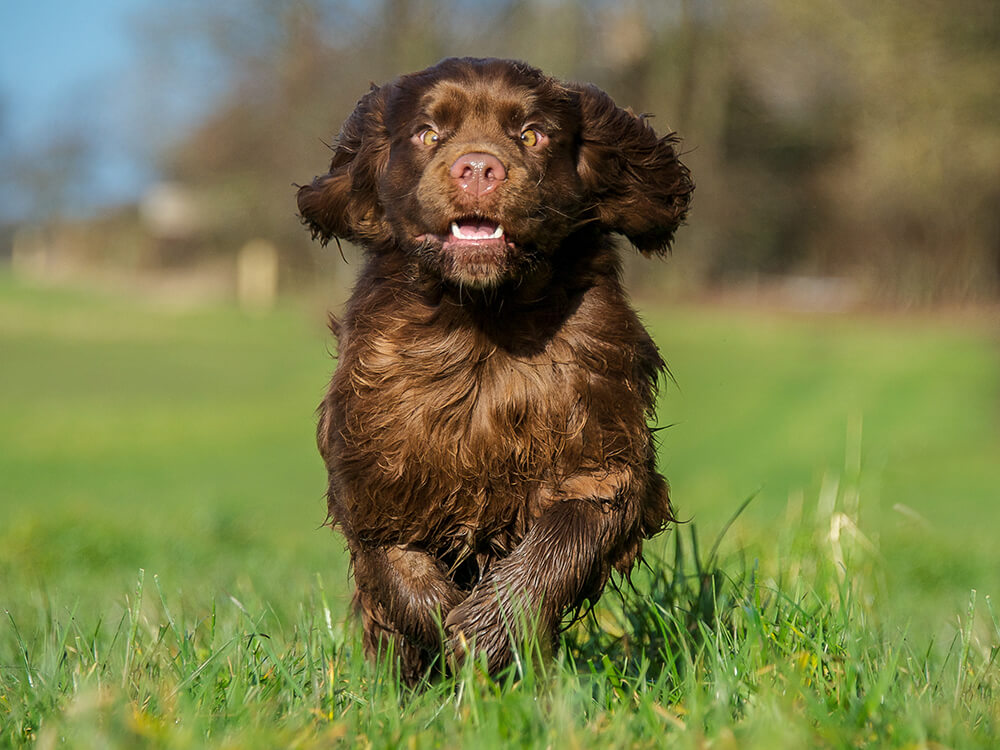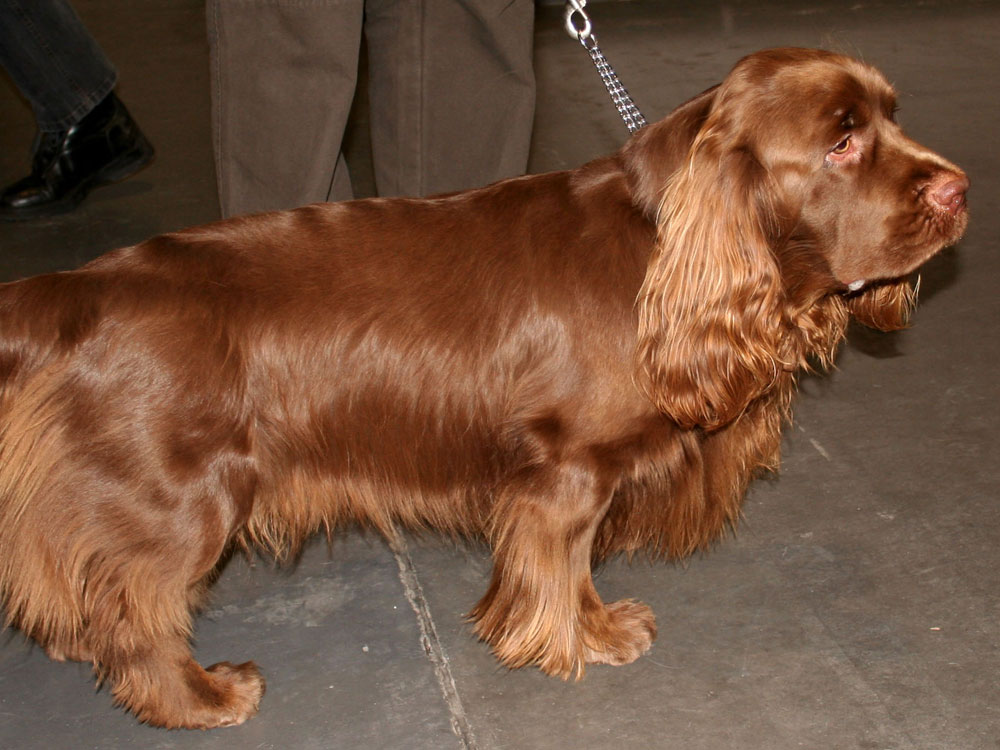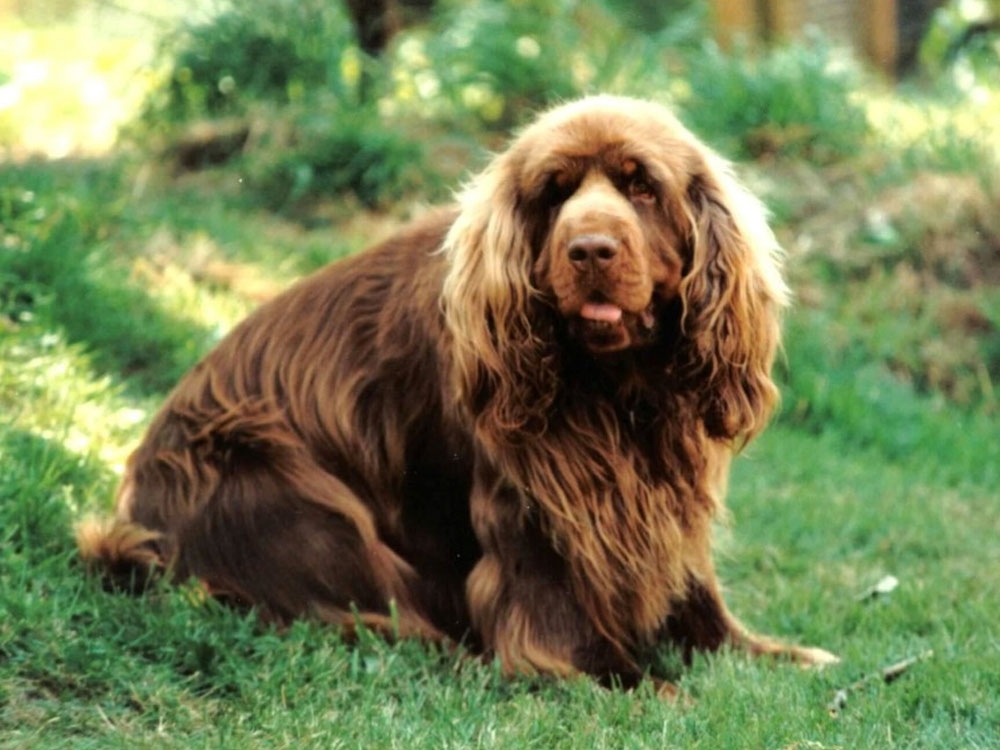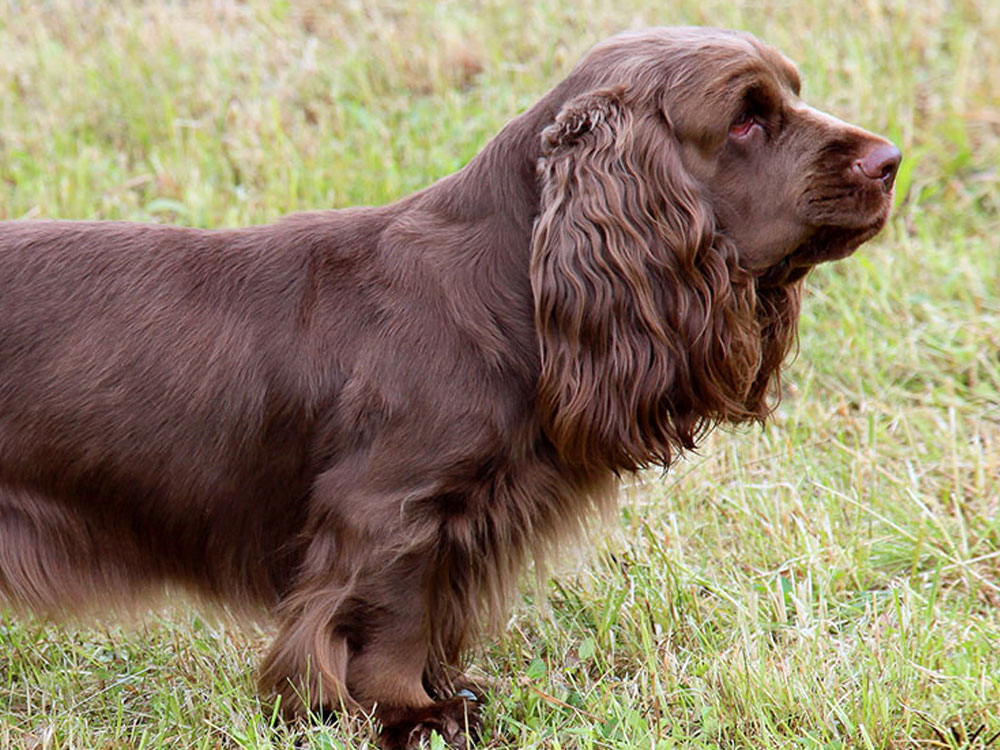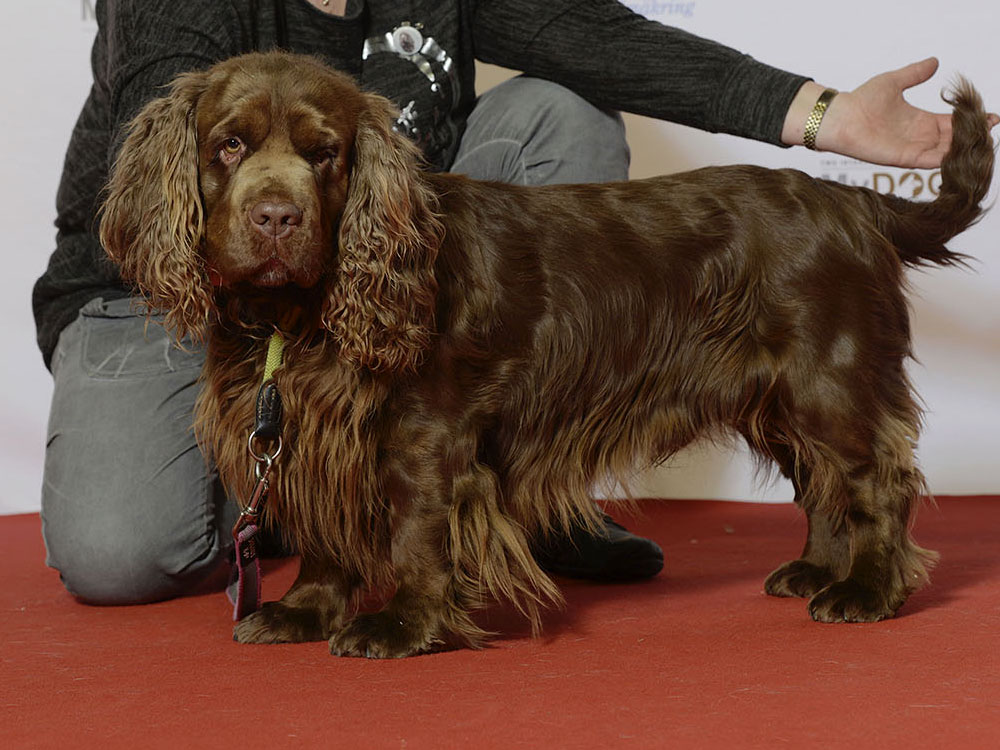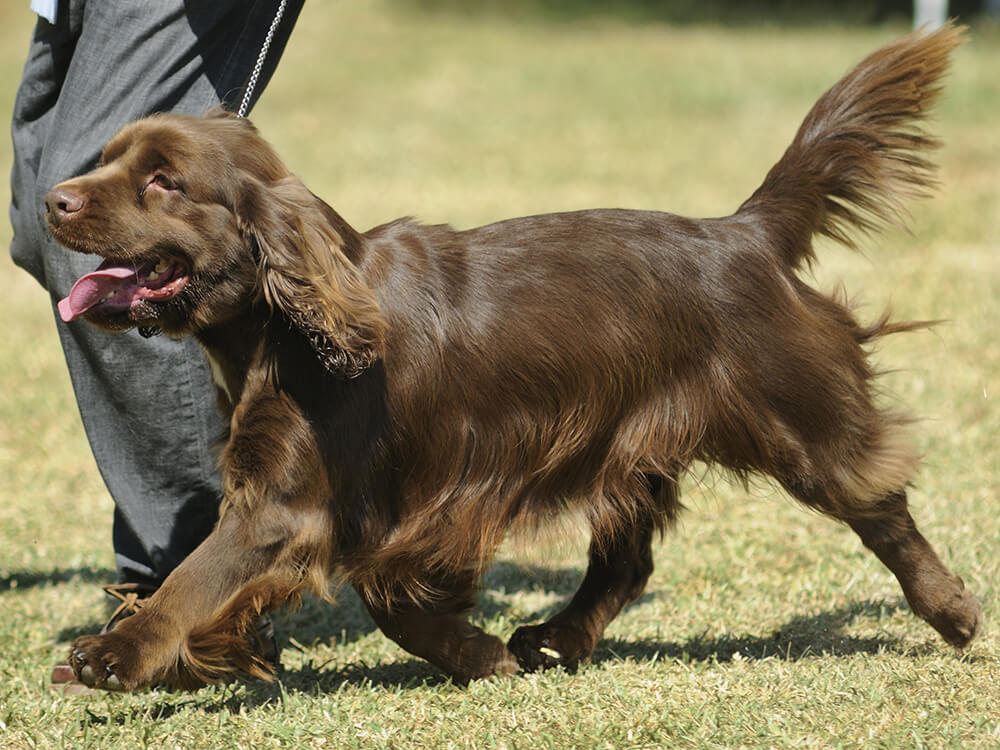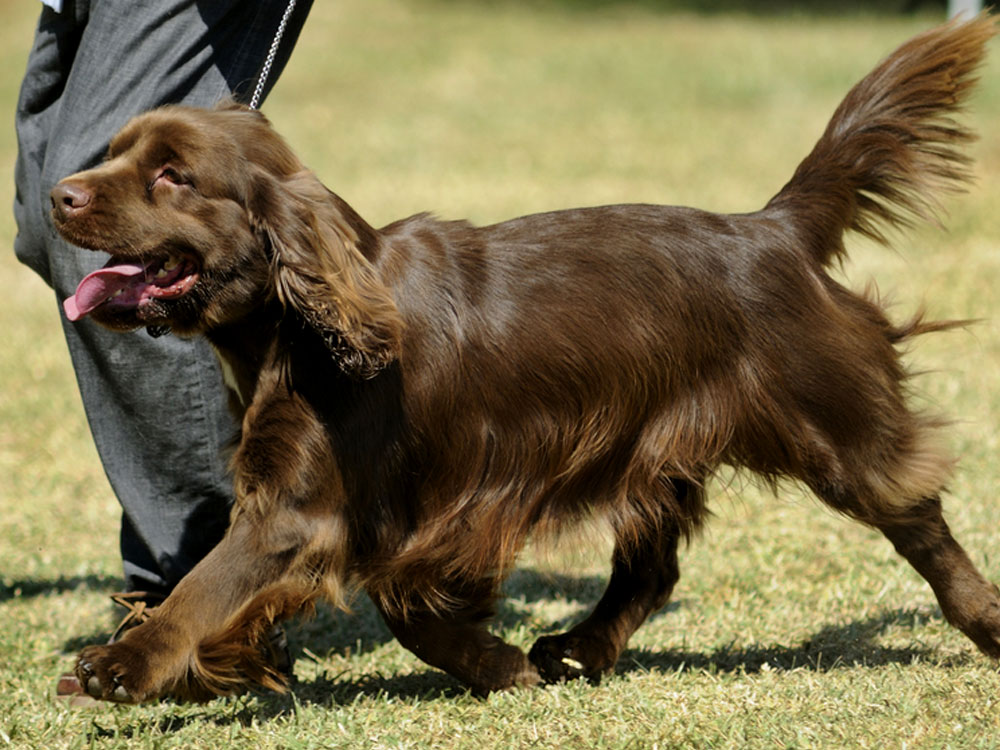
Sussex Spaniel Breed Pictures
Vital Breed Stats
| Height: | 38 - 40 cm M | 38 - 40 cm F |
| Weight: | 18 - 20 kg M | 18 - 20 kg F |
| Breed Group: | Gundog Dog Group |
| Life Expectancy: | 13 - 15 years |
| KC Registered: | No |
Breed Characteristics
| Size: |  |
| Grooming: |  |
| Exercise Level: |  |
| Trainability: |  |
| Barking Level: |  |
| Good with Children: |  |
| Good with other pets: |  |
| Affectionate: |  |
| Protective: |  |
| Cost to Keep: |  |
Give a thumbs up if you love the Sussex Spaniel

0
More About the Breed
History
The Sussex Spaniel originated in the eighteenth century in the UK. Mr. Augustus Elliott Fuller, a rich British landowner, was recognised as the Sussex founder. For fifty years, they were kept as working dogs on his large estate. Its breeding was limited mainly to Sussex County, and the spaniels were occasionally inbred with field spaniels.
There were other Sussex Spaniel breeders; however, their numbers dropped during World War II. Since breeding was discouraged during wartime, their numbers dwindled and only about five to seven known Sussex Spaniels were left. Gratefully, through the hard work of breeder enthusiasts, Mrs. Joy Freer in particular, saving the lovely breed was a success. The breed is recognised by Kennel Club in the UK.
For the protection of the breed, the Sussex Spaniel Association was formed in 1924. The breed was soon identified by the Kennel Club in 2004 as a vulnerable British breed with only about fifty registered dogs in 2016.
Appearance
Considered as bird dogs, the Sussex Spaniel has a long, rectangular body and sporting its trademark—an abundant, feathery-rich, golden liver coat. In comparison with the rest of the spaniel breeds, Sussex yields a very unique look. Its head is wider, having a defining curve between its ears. It is strongly built and moves with a distinctive roll.
The breed has hazel eye colour showing off a soft and a gentle expression. It has thick, fairly large ears set moderately low. One of the noticeable features is visible around its neck, full of long, slightly-wavy ruffles. Round in shape, its feet are well built with feathering in between. The tail is pleasantly feathered, set low, moderately long, and couldn’t be carried way above its back.
The Sussex Spaniel is distinctive with its abundant coat. Its ears are covered with soft, wavy hair. Its body is moderately well-feathered, with golden liver as the only accepted breed colour. Gold is the predominant colour.
Grooming
Temperament
Intelligence
The Sussex Spaniel is known to be intelligent and is easy to train. Owners are encouraged to train their dogs as early as eight weeks old. With late training, the breed tends to do things its own way and could develop some unwanted behavioural issues.
As this canine is intelligent and trainable, it is also sensitive particularly on 'voice' commands. Therefore, using the technique of raised voice doesn’t always end up with a desired positive result for this breed. The best choice is to use positive reinforcement during training.
Nutrition
Feeding
Health
- Hip dysplasia
- Heart problems
- Otitis externa
- Deafness and eye problems
Exercise
Cost of Ownership
The average rate for a well-bred Sussex pup is between £400 and £600. Insurance may cost about £22 (basic) to £42 (lifetime) monthly. The food cost is estimated at £30 to £40 monthly. For vaccinations, boosters, annual checks, and other veterinary costs, pet care expenses may add up to more than £1,000 annually.
On average, a Sussex Spaniel owner will spend about £60 to £90 per month. The insurance costs can also affect these cost estimates. For its lifetime (10–12 years), the costs can range from £7,200 to £12,960 overall. This estimate does not include the costs incurred in buying a puppy yet.
Sussex Spaniel Breed Highlights
- The Sussex Spaniel loves to please its owners.
- The breed keeps its eyes on its owners. It has a strong guarding instinct.
- The breed has a unique colour—its golden liver coat is its crowning glory.
- This breed needs regular brushing (2–3 times a week) and probably professional grooming.
- The Sussex Spaniel is good with children.






